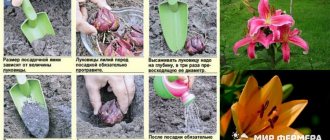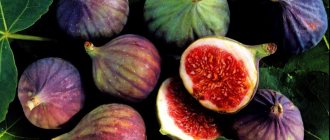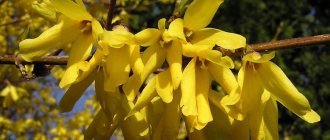- September 14, 2019
- Flowers
- KatrinGlamour
Chrysanthemum has long been and quite deservedly considered the real queen of the autumn garden. She decorates the flowerbed with her luxurious flowers until late autumn. It is thanks to its long, abundant flowering, large palette of shades and variety of varieties that chrysanthemum is extremely popular.
Many people adore these beautiful flowers, which, by the way, look equally good in flower beds and flower pots. But not everyone knows that chrysanthemums need special care when planting and growing. This is not to say that they are too capricious, but if you want the plant to delight your eyes with its beautiful inflorescences for a long time, try to take proper care of it. So, if you decide to get your own bushes in the garden, it will be useful for you to learn about the features of caring for and planting chrysanthemums.
Peculiarities
There are many varieties of chrysanthemums, each of which is good in its own way. The most popular among them are: orange-scarlet “Apollo”, burgundy “Romenta”, cream “first snow”, “lilac fog”, pink “Heba”, yellow “Svemba”, “multiflora”. But despite such diversity, the famous Korean chrysanthemum, with inflorescences reminiscent of an indoor bride flower, has been in greatest demand among gardeners for many years. In the photo you can see what Korean chrysanthemums and other popular varieties look like. As you can see, every gardener can find a plant to suit his taste: with large and small flowers, perennial and annual, variegated and muted.
As for Korean chrysanthemums, they have many advantages:
- resistance to low temperatures;
- compatibility with other plants;
- beauty;
- abundant, long-lasting flowering that lasts until the first frost.
If you start growing chrysanthemums in open ground, they will delight you with their flowering in August and will bloom throughout the fall. This plant is not afraid of frosts down to seven degrees below zero.
Residents of the northern regions mistakenly believe that chrysanthemums cannot be placed in open ground. However, in fact, these flowers winter well if they are properly prepared. To do this, you just need to cut off the stems, leaving only stumps no more than 15 cm high. Then they should be covered with peat, and covered with fallen leaves and spruce branches on top.
Chrysanthemums have faded - what to do
Care after flowering
At the beginning of autumn, feed your frost-resistant chrysanthemums one last time with potassium-phosphorus fertilizers to increase their resistance to frost. With the onset of frosts, chrysanthemums overwintering in the garden (primarily varieties of Korean chrysanthemums with small flowers) cut off the above-ground part at a height of 10-15 cm from the surface, carefully hill up and mulch the planting with a layer of dry leaves 30-40 cm thick. If winters are in your area too cold and snowless, cover the area on top of the mulch with brushwood or spruce branches. The shelter should not be impenetrable, because plants should not rot under such a “blanket”.
In the photo: Yellow chrysanthemums
How to preserve chrysanthemums in winter
Tall, large-flowered, heat-loving varieties are unable to survive our winter in open ground. Various methods are used to store them. Here is one of them: the mother chrysanthemum bushes, extracted with a clod of earth, are placed in wooden boxes and stored in a bright and cold room (2-6 ºC) with an air humidity of about 80%. If you don't have many bushes, plant each of them in a separate container. Water the chrysanthemums from time to time to keep the soil slightly moist. You can simply store mother bushes with earthen clods in the cellar at a temperature of 0-4 ºC on an earthen floor, placing them tightly next to each other.
Growing home chrysanthemum - planting and care
There is another way to store chrysanthemums. To do this, dig a trench 50 cm deep of any width in the garden, into which chrysanthemum queen cells are placed, the distance between which is filled with earth. Chrysanthemums are stored in an open trench until the coldest weather to destroy pathogens of fungal and viral diseases. With the onset of frost, the trench is covered with boards or a wooden board, slate cloth or some other material that forms a “cover” for the ditch, on which leaves are poured, earth is placed on top of the leaves, and then a covering material is laid, which is secured so that it does not blow away by the wind. This method is inconvenient because it will be difficult for you to control the condition of the plants in winter.
Well, and finally, a reminder:
- small-flowered, Korean chrysanthemums and Russian hybrids overwinter well in open ground;
- chrysanthemums grown in greenhouses should be dug up for the winter, as well as large-flowered chrysanthemums, foreign hybrids and new varieties of chrysanthemums about which you know little.
Popular varieties
Today there are more than 150 varieties of chrysanthemums. True, domestic gardeners prefer to grow their hybrids, which are distinguished by their durability, unpretentiousness and beauty. In addition, the care and planting of different varieties of chrysanthemums are practically the same, which greatly simplifies the task of gardeners.
In general, chrysanthemums have a rather complex classification, but the most popular types can be identified:
- Korean - small-flowered chrysanthemums, the size of the inflorescences ranges from 2-9 cm;
- Indian - large-flowered plants with flowers up to 10-25 cm in diameter;
- Japanese;
- Chinese.
In addition, chrysanthemums can have different flower structures. They are:
- semi-double;
- simple;
- terry;
- hemispherical;
- anemone-shaped;
- flat;
- curly;
- radiate;
- pom-pom.
And the leaves of flowers can be reed-shaped or tubular.
In our country, it is advisable to grow beautiful, unpretentious chrysanthemums that bloom for a long time. Large-flowered varieties are used to make bouquets and flower arrangements. But for planting in the garden, it is best to choose a small-flowered variety.
- Korean variety "Alyonushka". It has simple bright purple flowers with a diameter of up to 5-6 cm. Bushes can grow up to half a meter. Alyonushka begins to bloom in September.
- Korean variety "dune". It blooms with yellow-orange inflorescences with a diameter of up to 5 cm. This chrysanthemum can grow up to 60 cm.
- Bush variety "saba". It has very original, unusual colors: the middle of these flowers is green-yellow, and the petals are painted in a red-purple hue with a white edge. Looks amazing. The inflorescences of this variety reach a diameter of 5 cm, and the growth of the bushes is 0.7 m.
- Korean variety "snowball". It has beautiful double inflorescences with a diameter of about 5-6 cm, white with pink tips. Shrubs grow up to 60 cm.
- Korean variety "Mishal". Small-flowered double chrysanthemums, the size of the pompom inflorescences reaches 4-4.5 cm in diameter. The color of the flowers is bright yellow. "Michelle" begins to bloom in September, and its bushes reach a height of 40 cm.
- Korean variety "terracotta". It has double orange inflorescences with a diameter of 5-6 cm. The height of such bushes ranges from 50-60 cm.
As you can see, the choice is quite varied. So you can easily choose a suitable plant for yourself, which will delight you with its beauty and bright colors for almost six months.
Care
The peak of flowering falls in autumn, so you cannot leave flowers without attention - you need to support them with watering and fertilizing. Water according to weather conditions. The volume is reduced because there is no summer heat and the nights are cooler. The soil should not be allowed to dry out - the plant will weaken and will not be ready for winter. Before cold weather, the soil is well watered (1/2-1 bucket per bush), mulched with humus and compost. Mulch will help retain moisture and protect the roots in cold weather.
Related article:
A few secrets on how to preserve potted chrysanthemums until spring
The third feeding, described above, falls in the fall. It will prolong flowering, restore wasted resources necessary for the winter period, and humus added to the mulch will become a source of additional nutrition.
Pruning, preparing for winter
Pruning begins after flowering is complete and if cold weather sets in. The stem is not shortened to its full length - a stump of 15 cm is left. Then the “stumps” are hilled up and covered with straw, humus (10 cm) or pine litter (35-40 cm). Along with the above-ground part, pathogens of various infections are removed from the bush, so cut branches cannot be used for compost - they are burned or taken out of the area.
Not all chrysanthemums are left to overwinter in the ground. For example, Dubok, Red Moscow, Chamomile, Lilac Fog will withstand the cold well, and Golden Ball, Golden Orpheus, Helen are dug up. They, like winter-hardy ones, are pruned, then transplanted into pots or placed in a box, sprinkled with earth (sawdust) and stored in the basement. Water rarely, moderately - the soil should be slightly moist.
If there is no basement, the bushes are buried in a greenhouse or buried in a trench, covered with straw, boards, and slate on top. Dig in the spring after the soil has thawed.
You can grow chrysanthemums in the garden using cuttings and dividing the bush. You can divide and plant the bush from spring to autumn. Cuttings (5-7 cm) are harvested in spring or summer, using shoots from the roots or young side shoots. Root them in sand or nutrient soil, covering them with a jar on top.
How to grow chrysanthemums in the garden
Keep in mind: these flowers do not tolerate moisture retention and even the slightest darkening very well. So chrysanthemums should be planted in a sunny, preferably slightly elevated place. This way you will be sure that the flower shoots will not stretch too much and will not begin to bloom earlier. Just remember that you should never allow the soil to dry out, since this plant has a shallow root system.
The ideal option would be to grow chrysanthemums in loose, permeable soil. Moreover, the ratio of nutrients in it should be optimal. So, if your site is dominated by infertile dense soil, before planting chrysanthemums it should be fertilized with compost, peat or rotted manure.
But you shouldn’t overuse useful additives: they will grow faster, but their flowers will not be as beautiful. It is very important to provide chrysanthemums in the garden with good drainage. To do this, mix the soil with a small amount of coarse sand. These flowers grow best in a slightly acidic and neutral environment.
Planting chrysanthemums should be planned for a rainy or cloudy day. If the weather outside is sunny and hot, try to plant the cuttings in the ground early in the morning or late in the evening, when there is almost no sun.
How to grow chrysanthemums? First of all, dig holes 35-40 cm deep, fill them generously with water and place the prepared drainage inside. Before this, it is advisable to mix it with vermicompost in a ratio of 20 to 1. Then place the cuttings in the holes and carefully cover them with earth. Since the roots of chrysanthemums extend parallel to the ground, they cannot be placed very deep. If you choose a tall variety of flowers, be sure to consider creating a support for them.
Immediately after planting chrysanthemums, the first pinching should be done - cutting off the growing point from the flower. After three weeks, you will need to do another pinching - break off the top of the shoot, on which several nodules have formed.
How to grow chrysanthemums in the garden? In the first days after planting, it is necessary to organize artificial shade for the seedlings, because at this time bright sunlight is contraindicated for them. For this, it is best to use non-woven material. In this case, the canopy should not touch the cuttings.
Planting and propagation of chrysanthemums
When to plant
Chrysanthemum seedlings are planted in the spring when the return frosts have passed, at the end of May or beginning of June. Chrysanthemums are also planted in autumn, no later than two weeks before frost sets in.
When choosing a site for chrysanthemum, you need to remember that this plant is heat-loving, light-loving and does not tolerate stagnation of water in the roots, so the planting site should be elevated, well-lit by the sun for at least five hours a day and reliably protected from the wind.
The soil is preferably neutral or slightly acidic, nutritious and loamy. Sandy or clay soil must be improved with organic fertilizers. But chrysanthemum does not like unrotted manure, preferring humus or vermicompost, which are applied to the soil before planting chrysanthemums along with complex fertilizer. Just do not overdo it with fertilizers, so that the plants do not gain green mass to the detriment of flowering.
How to plant
To plant chrysanthemums in open ground, choose a cloudy, or even better, rainy day. It is better to plant chrysanthemums not in holes, but in a trench, keeping a distance of 30-50 cm between seedlings, depending on the variety and type. After planting, it is advisable to water the trench with a root solution at the rate of 1 g per liter of water so that the plants quickly form their root system. Immediately after planting and watering, pinch - remove the growing point of the chrysanthemum. Now cover the seedlings with a covering material (for example, lutrasil) to create the most favorable microclimate for them to take root and grow. Remove the covering when you are sure that the seedlings have taken root and are growing.
- Planting flowers in autumn
Cuttings
Another method of propagating chrysanthemums is cuttings. In the spring, when the daytime temperature reaches 21-26 ºC, using a sharp, clean knife, cut cuttings from the mother plant (side shoots are not suitable, only those shoots that grow directly from the root of the chrysanthemum) a few millimeters above the leaf with the bud, the length of the cutting should be 6-7 cm. The lower end of the cuttings is dipped in a growth stimulator (Kornevin, for example) and stuck into a container with moist nutrient soil, covered with 2 cm of sand, at an angle of 35-45º. The cutting should remain in the sand without touching the ground. While the chrysanthemum cuttings are rooting on a light windowsill, the soil in the container should be moist and the air temperature 15-18 ºC, and then after 2-3 weeks the cuttings will take root and can be transplanted into open ground.
Reproduction methods
How to grow chrysanthemums? If you plant them with seeds, you will not preserve the variety, so it is best to use one of the other possible methods:
- dividing bushes;
- cuttings;
- separation of root shoots.
Chrysanthemums can be planted and replanted only in the spring, preferably in May, when there are definitely no frosts or sudden cold snaps. If you postpone the planned event to the beginning of summer, the flowers will not suffer one bit.
If you bought planting material at the beginning of autumn or at the end of summer, do not delay planting. Try to plant the plants in open ground no later than September 15th. Otherwise, before the onset of frost, the roots of chrysanthemums simply will not have time to grow stronger. If you missed this moment, do it differently: just cut the cuttings and place them in indoor pots until the weather warms up.
Just place the flowerpots in a dark room with a low temperature of about 4-6 degrees, which will not change until spring. For example, a heated terrace or loggia may be suitable. Throughout the winter, all you need to do for maintenance is to periodically water the plants.
At the end of February, chrysanthemums can be moved to the greenhouse. There they will need to be watered much more often. And by the end of March, when the seedlings have grown, it will be possible to make cuttings by cutting off shoots up to 10 cm long.
Cut cuttings should be placed in a box with soil, humus and sand and covered with glass. It usually takes a month for plants to develop their root system, after which they can be transplanted into open ground.
Planting and caring for chrysanthemums
- Planting: sowing seeds in open ground in May or for seedlings in April. You can sow before winter, no later than two weeks before the onset of frost.
- Flowering: late summer, autumn.
- Lighting: bright sunlight.
- Soil: dry, well-drained, nutritious, loamy, slightly acidic or neutral.
- Watering: plentiful.
- Fertilizing: 3 times per season alternately with mineral and organic fertilizers in liquid form. The first feeding is 7 weeks after planting.
- Reproduction: annuals - only by seeds, perennial species and varieties most often vegetatively (by dividing the bush and cuttings).
- Pests: nematodes, aphids, meadow bugs.
- Diseases: gray rot, rust, septoria, powdery mildew, bacterial root canker.
Read more about growing chrysanthemums below.
Chrysanthemum (lat. Chrysanthemum) - herbaceous perennials and annuals of the Asteraceae or Asteraceae family. Translated from Greek it means “golden-flowered” or “sun flower”, since many species have yellow inflorescences. According to the GRIN website, this genus contains 29 species in nature, distributed in the northern and temperate zones, mostly in Asia. Archaeologists claim that more than 2500 years ago, the chrysanthemum was already cultivated by the ancient Chinese, who ate its petals as food, and in the treatise “Spring and Autumn” it was mentioned by Confucius himself! Then the Japanese began cultivating the flower, idolizing this flower so much that only members of the imperial family had the right to wear clothes with the image of a chrysanthemum. The chrysanthemum appeared in Europe in the eighteenth century, but it began to be intensively cultivated only in the nineteenth.
Scientists believe that the now widely known garden chrysanthemum (Chrysanthemum hortorum) appeared as a result of crossing two Asian species - the small-flowered chrysanthemum (Chrysanthemum indicum), which comes from Japan, and the large-flowered chrysanthemum (Chrysanthemum morifoolium) from China, but some breeders are confident that the ancestors Garden chrysanthemums are small-flowered Indian chrysanthemums and Chinese chrysanthemums. The chrysanthemum is so popular among breeders that experiments on developing new varieties do not stop to this day, especially since for humanity the chrysanthemum is not just a beautiful flower, but the last sonorous chord in the autumn symphony of flowers and colors...
- Dogwood: cultivation, propagation, types and varieties
How to care for chrysanthemums in the garden
These flowers need special care. It is very important to control the watering regime of plants. Despite the fact that chrysanthemums are quite moisture-loving, it is also impossible to water them too often and abundantly, so that the root system does not begin to rot. You can often water flowers only during dry seasons, otherwise the stems will become crusty and the inflorescences will stop blooming beautifully. Chrysanthemums also need to be watered frequently until they bloom. It is best to use rain or settled water.
The volume of liquid depends on the characteristics of the plants. Thus, flowers with small, hard leaves should be watered less frequently than bushes with soft, large leaves that evaporate a lot of moisture. During planting and caring for chrysanthemums, a lot of water will be required. If you do not water the plant in a timely manner, it will quickly shed its buds and you will never see its beautiful flowers. So don't be lazy.
In addition, chrysanthemums are very fond of nutritious feeding. Gardeners prefer to pamper their seedlings with mullein infusion in a ratio of 1:10. Before the first buds appear, it is best to feed the flowers with phosphorus and potassium fertilizers - such additives allow you to achieve lush, abundant flowering. Some gardeners use nitrogen mixtures to feed chrysanthemums, which promote the growth of leaves and stems.
But before flowering begins, you should not add fertilizer to the soil. When feeding plants, be sure to ensure that the solution does not get on the stems and leaves - it can burn them. You only need to water the flowers at the roots.
For improved development of chrysanthemums in the garden, provide them with a balanced diet for the first few months - during this period, active growth of green mass occurs. It is best to use chicken manure and mullein. But remember: if you overfeed the plant, you will harm it much more than if you underfeed it.
Caring for chrysanthemums in the garden also involves forming a bush. Remember to trim and pinch it regularly. For the first time, the top of the flower should be removed immediately after planting, and the second time - when the shoots on the sides reach 10 cm. Then the bush should remain untouched until flowering.
During the period of active flowering, caring for chrysanthemums in the garden involves regularly removing wilted and dead buds. This way you can significantly extend the flowering time.
If you want large flowers, you can completely cut off the side shoots. As a result, only one stem and one peduncle will remain on your bush. The plant will use all its strength to grow and form a flower.
Planting chrysanthemums
To grow chrysanthemums, choose an open sunny area (with slight shade at midday). Only in such a place can you count on abundant flowering of the bush.
The soil for chrysanthemums must be loose and fertile. Before planting, fill it with the necessary amount of nutrients. To do this, under each bush add:
- 20-30 g nitroammophoska,
- 200-300 g wood ash,
- 2-3 kg of humus.
Place a layer of drainage at the bottom of the planting hole, because The chrysanthemum root system is quite sensitive to excess moisture.
Preparing for winter
In order for your chrysanthemums to bloom as profusely and beautifully next year, you should make sure that they overwinter well.
In the fall, when flowering ends or before the first frost, the plant should be fed with phosphorus-potassium fertilizer, cut off the stems, leaving 10-15 cm from the soil and covered. Pruning helps prevent the flowers from rotting and the development of harmful ridges on its stems. You can use spruce branches or mulch with leaves as shelter.
But chrysanthemums with large inflorescences are afraid of frost, so before the cold weather they need to be dug up along with the roots and placed in a pot. Until the next planting, flowers should be stored in a room with a temperature of 0-5 degrees. Caring for them during this period comes down to watering the soil, which should not dry out.
Seed method
Growing perennial chrysanthemums from seeds is practiced by those who are experimenting with choices, who need a large number of plants, several varieties, or a specific one. Most often it is used for breeding small-flowered Korean chrysanthemums and annual varieties. Perennials are grown through seedlings, annuals - by seedlings and without seedlings.
Seeds of garden varieties can be purchased at the store or collected yourself. Hybrid varieties are not suitable for collecting planting material because they lose varietal characteristics. If this fact is not important, then hybrids will do. The seeds of small-flowered chrysanthemums have good germination, while those of large-flowered chrysanthemums have worse germination.
Related article:
How to speed up the flowering of chrysanthemums
The timing of sowing seeds for seedlings depends on the climate of the area. In the southern regions, sowing is carried out in the second ten days of February, in the Urals, north of Central Russia, in Siberia - in the first ten days of March, in Moscow and the Volga region - in the third ten days of February.
Preparing seeds and soil
The collected seeds need to be prepared for sowing. First, they are immersed in warm water for 5 minutes, and those that float are removed - these are empty and low-quality seeds. The remaining ones, wrapped in gauze or cloth, are disinfected - kept for 15-20 minutes in a weak solution of chlorhexidine, potassium permanganate or Fitosporin (diluted according to instructions). After this, dry well.
The soil for seedlings must be loose, moisture- and breathable - in heavy and dense seeds, they take a long time to germinate, and the seedlings grow weak. Purchased soil for flower seedlings or a self-prepared soil mixture, which includes humus, peat and garden soil in equal parts, is suitable. The soil mixture is disinfected with a pink solution of manganese and boiling water. When it dries a little, pour it with Fitosporin solution.
How to sow
You can grow seedlings in low boxes, wide containers with drainage holes, in individual cups (volume 500 ml) in which holes are made for moisture drainage, in peat tablets. A previously used container is first washed with soap, scalded with boiling water or rinsed with a manganese solution.
Planting stages:
- a layer (1 cm) of drainage made of expanded clay, crushed stone, coarse sand is placed on the bottom, soil is poured, filling 2/3 of the volume, moistened;
- sand (3-4 mm) is poured on top and sprayed from a spray bottle;
- spread the seeds evenly, keeping 2.5-3 cm between them, press lightly with the palm of your hand (do not cover them with soil), moisten;
- The container is covered with film and kept in a room where the temperature is 21-25 °C.
2-3 seeds are planted in peat tablets (they are first dipped in water for half an hour to swell) and cups. Weak seedlings are then removed, leaving the strongest ones to grow.
Rules for caring for seedlings
The container is kept warm until germination, ventilated for 20-25 minutes, condensation on the film is removed, and watered with a spray bottle. If everything is done correctly, seedlings will appear after 10-14 days.
Related article:
Perennial garden chrysanthemums
The film is then removed, and the seedlings are transferred to a cool (15-18 ° C) bright place where there is no direct sunlight. If there is not enough light, then install backlighting. For irrigation, use settled water at room temperature.
Picking, aftercare
Picking into separate containers (it is best to use plastic glasses with a volume of 500 ml) begins as soon as real leaves are formed on the seedlings - 1-2 pairs. The same soil mixture will do. Water the seedlings in advance so that the lump of earth does not crumble. For picking, strong and healthy plants are chosen, weak and frail ones are discarded.
First, drainage is poured into the cup, a little soil on top, then the seedling is planted. Fill it up to the first cotyledon leaf and water it. After some time, the soil, if it has settled, is added.
How to care:
- the cups are placed in a bright, cool place, where there is no direct sunlight or there is the possibility of shading;
- to speed up adaptation, seedlings are sprayed with a growth stimulator (Zircon, Epin Extra);
- water after the top layer of soil dries;
- on rainy days they provide additional lighting;
- a week later, feed with potassium humate, Fertika Lux, Uniflor Flower, biohumus for seedlings;
- in the future, fertilizers are applied every 1.5-2 weeks.
Fertilizer recipe for garden chrysanthemums
To prepare healthy fertilizer, you need to take a large container and pour two buckets of mullein or one bucket of chicken manure into it. Then fill it with water and stir well. Leave the resulting solution in this form for three days.
Separately prepare the second part of the fertilizer. Mix a liter of concentrated infusion with 10 liters of water. Finally, combine both parts of the mixture and mix thoroughly. To feed, each plant needs a liter of this solution, which should be poured under the root. Just be sure to moisten the soil before doing this.
Plant care - watering, fertilizing, storing in winter
The watering regime for perennial chrysanthemums is selected taking into account the characteristics of the soil and weather. The soil should still be moist, but not soggy. It is better to take soft water for irrigation. It is especially important for the development of the plant that there is enough water in the soil within a month after planting. The procedure is carried out once or twice a week. The signal to reduce watering is the appearance of buds. During flowering it is reduced even more.
If chrysanthemums are not planted this year, then before flowering, nitrogen fertilizers are applied to the soil once every one to two weeks, depending on its saturation with useful elements. If planting was done this spring, feed twice during the entire period of growth and flowering. After the flowers appear, phosphorus-potassium compounds are used. You can use both organic and mineral fertilizers.
Until July, feed with chicken droppings or cow manure diluted in water. 1 liter of the resulting infusion is diluted in a 10-liter bucket. Before applying fertilizer, the chrysanthemum is watered, the soil should be moist. Then pour 1 liter of solution directly under the root of the plant.
Mulch made from sawdust, bark, and pine needles protects the plantings from being eaten by parasites. It is also used to protect chrysanthemums from diseases and reduce weeds.
The first time a chrysanthemum planted in the ground is pinched when the length of the cutting reaches 10-12 cm. The second time - at 20-22 cm from the root. Plants planted in spring are pinched three to five times per season. Autumn - carry out the procedure once or not at all.
Recommendations from gardeners
After planting, caring for chrysanthemums is actually quite simple. It consists in:
- regular watering;
- periodic loosening of the soil;
- weeding;
- periodic spraying with pest control solutions.
Chrysanthemums tolerate cold quite well, but still they also require insulation. Around the end of October, flower beds should be protected from the first frosts using a frame with plastic film stretched over it. Thanks to this shelter, you will be able to watch the beautiful blooming chrysanthemums that you planted in the spring for at least another month. True, at the end of autumn the frame will still have to be removed, and the flowers transplanted into pots and sent to a warm veranda until April.
In general, as you can see, growing chrysanthemums in the garden is not so difficult. To do this you will need a minimum of knowledge, time and effort. And if you are no longer a beginner in gardening, then you can easily cope with this plant. If you previously had an indoor flower bride, caring for a chrysanthemum will not be difficult for you. After all, these plants are very similar to each other. The only difference is that the bride grows in a pot, and the chrysanthemum loves open ground.
Features of chrysanthemums
I like chrysanthemums even when they are not in bloom. Their leaves look like parsley, and their blossoming buds look like daisies and daisies. With their colorful blooms they say goodbye to summer and welcome winter. That is, they bloom at a time when it is still warm during the day, but in the evenings the breath of winter can already be felt.
There were cases when chrysanthemum bloomed until the first days of January. It looks wonderful when lilac, pink or white petals flaunt against the background of flying snowflakes.
And most importantly, chrysanthemum is absolutely unpretentious. But, perhaps, there are several nuances that are important to consider when caring for an autumn flower.
How to control pests
As you already know, moisture-loving chrysanthemums simply adore watering and cannot do without it, especially during dry seasons. And regular irrigation prevents the occurrence of mites and aphids that do not tolerate water.
But still, watering alone is not enough to eliminate all kinds of pests. After all, many pathogens and pathogens live in the soil. So after rains, plants should be treated with special preventive solutions, the most popular of which are Previkur and Quadris.
Thanks to “Fitosporin” you can protect your chrysanthemums from root rot. This product just needs to be added to the water before each feeding.
Chrysanthemums in the garden are threatened by all kinds of street dwellers and diseases.
- Spider mite. An insect that sucks sap from plants. You can find it on the web on the back of the leaves. If the leaves of a flower turn gray-brown, begin to darken and fall off, most likely they are being hunted by spider mites. In this case, the plant should be treated with special chemicals, such as “Aktellika”, “Iskra.” or "Rabitora".
- Leaf nematodes. These pests can be identified by painful deformations of the leaves and darkening of the veins. In such a situation, gardeners recommend changing the soil and cutting off damaged areas.
- Verticillium. An infectious disease that penetrates a plant through the root system. With this disease, the first thing that happens is the leaves located below begin to turn yellow and wither. If you identify the problem in time, spraying with special preparations, such as Fitoverma and Aktara, will help solve the problem.
- Powdery mildew. First it affects the buds and leaves, on which a strange white coating appears, and then gets to the roots. In this case, you should cut off the damaged areas and treat the plant with Bordeaux mixture.
- Caterpillars. They are considered the most dangerous garden inhabitants for plants. Only one caterpillar can eat several buds per night. That is why it is so important to regularly inspect the flowers, eliminating various pests.
Diseases and pests
But in this regard, chrysanthemum is quite picky. There are many diseases to which it is susceptible, and it can also be attacked by certain pests. Now we will briefly go over all the points.
Powdery mildew
This sore often clings to many plants, not just chrysanthemums. It looks like a white coating (resembling mold) on the leaves and shoots. In case of illness, it is recommended to treat the plant with a soap solution or a special antifungal drug. If areas are severely damaged, cut them off and burn them.
Rust
The disease manifests itself in the form of brown (there may be various shades of brown) spots on the leaves. In some ways they will resemble disputes. Most often, the disease occurs due to poor quality planting material, excess moisture, frequent planting and high air humidity.
In case of illness, it is recommended to immediately treat it with special means, and severely damaged areas should be removed and burned.
Septoria leaf blight
This is another type of fungus that appears as dried spots on chrysanthemum leaves. Occurs due to water getting on the leaves of the plant. Change your watering technique and either treat damaged leaves or cut and burn them.
Sclerotinia sclerotiiformes
This disease attacks the roots of the plant, and it looks like a white coating on the roots of the chrysanthemum. Usually occurs when storing the plant in winter. You won’t be able to save such a plant, so it’s better to immediately separate it from the rest and burn it.
Viral diseases
To date, gardeners have not found a way to combat viral diseases. This applies not only to chrysanthemums, but also to other plants, in principle. Symptoms of such diseases manifest themselves in changes in the color, size and even appearance of the plant. The only way to fight is to follow the rules of care.
Pests
As for pests, chrysanthemums can be attacked by aphids and nematodes. In the first case, you will get off with a slight fright, because... it will be possible to “poison” the pests. And in the case of nematodes, only preventive measures for the plant and soil will help.
Subtleties of growing at home
When growing chrysanthemums as a houseplant, it is important to know the subtleties of maintenance:
- for successful cultivation of a crop, a suitable substrate is needed - the soil must be loose, breathable, enriched with nutrients;
- when preparing the soil yourself, it is recommended to add chicken manure;
- after watering, it is necessary to remove excess water;
- The next moistening of the soil is carried out after the top layer of soil has dried;
- It is recommended to feed potted chrysanthemums with universal preparations;
- at the beginning of the growing season, the plant needs nitrogen; during flowering it needs to be fed with fertilizers containing potassium and phosphorus;
- After flowering, the chrysanthemum is pruned, leaving stumps 5-7 cm high.
On a note!
When growing home chrysanthemums, you should not place the flower near heating appliances!
Properties of chrysanthemums
The plant has therapeutic and gastronomic properties that have allowed it to become a luxurious ingredient in many dishes in Asian countries.
Language of flowers
Throughout the world, this plant is a symbol of joy, celebration and vitality. In Asia and much of Europe, these beautiful flowers are among the most popular and are used to decorate weddings and other important celebrations. In England, a bouquet of red chrysanthemums given to a woman expresses a declaration of love.
Is chrysanthemum a poisonous plant?
Chrysanthemums are dangerous for domestic animals (dogs and cats), as well as farm animals (horses, sheep, goats and cows). It is no coincidence that in the past, breeders used plantings of this plant to prevent wild animals from entering their lands. Chrysanthemums are not safe for humans either. If parts of this plant (especially flowers) are ingested, kidney failure and liver problems may occur. Among the most obvious symptoms: drowsiness, vision problems and irritation of the mucous membranes.
Chrysanthemums bloom
All their species bloom throughout the fall until the onset of the first frost.
How to protect chrysanthemums from pests
Regular and proper watering will help you not only maintain flowering and life in the flower in general, but will also provide reliable protection against damage by mites and various parasites that simply cannot tolerate moisture.
Do not forget that harmful microorganisms live in the soil itself, and they can encroach on your flower. Therefore, do not wait for this to happen, but feel free to go to the store and buy special drugs against diseases and parasites.
Of all the ill-wishers, the caterpillar is the most dangerous for chrysanthemums. Only this one individual can eat three buds per night! Therefore, keep an eye on the condition of your plant and then it will delight you for many years!
Pests of chrysanthemums
Most often, young shoots are damaged by aphids. The insect actively colonizes the lower part of the leaves, and a cluster of pests can also be observed at the base of the buds. Aphids feed on plant sap, slowing down its growth and flowering; severe infestation by the pest can lead not only to loss of flowering, but also to leaf fall.
Effective methods of control:
- To combat insects, use mechanical destruction (shaking, tearing off leaves) or spraying. To treat the flower, you can use an insecticidal preparation or a time-tested solution of laundry soap and ash. The fight against ants will also bear fruit, so it is additionally worth destroying the anthills located near the flower beds.
- Brownish-brown spots can signal an invasion of the meadow bug - it also feeds on plant sap. Without timely treatment, a pest colony can lead to the death of the plant. As a home remedy, it is recommended to spray the bush with a solution of baby shampoo and water (1 tablespoon per bucket of water).
- Slugs and garden snails readily feast on young leaves. It should be noted that they are much less interested in chrysanthemums than in vegetables and berries, so you should not immediately take radical measures. Birds attracted to the garden plot will help to effectively control their numbers. Special traps for snails and slugs have also worked well.
Beautiful bush of pink chrysanthemum
Due to its unpretentiousness and a huge selection of varieties, garden chrysanthemum is successfully used in landscape design. The plant can be used as borders to decorate the front edge of a flower bed. Tall cut varieties are effective as tapeworms.
The unforgettable, bitter-spicy aroma of chrysanthemums, the variety and brightness of the color palette are surprisingly harmoniously combined with the piercing blue of the autumn sky.
Author of the article: Mironchik Lyudmila Vladimirovna
- Related Posts
- Astrophytum - a small spherical cactus with a beautiful flower on the top
- Roses - how to grow on your own plot: planting, pruning, care, diseases and pests
- Secrets of growing lavender at home: planting and care
« Previous entry











